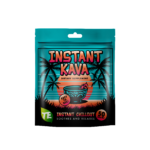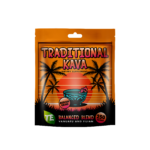Blog
Home / Blog
Kava and Kratom: Discover Nature’s Relief for Stress and Focus
Kratom and Kava: Discover the Perfect Herbal Duo for Relaxation and Wellness
 Introduction
Introduction
Kratom and Kava are two powerful herbal remedies that have become increasingly popular for stress relief, relaxation, and holistic wellness. While both are plant-based and natural, their effects, origins, and safety profiles differ significantly. In this guide, we compare kratom and kava, uncover their health benefits, and help you choose the right option for your needs.
TRADITIONAL KAVA KAVA POWDER

- Select options This product has multiple variants. The options may be chosen on the product page
SMOOTH VIBES KAVA KRATOM SHOT

- Select options This product has multiple variants. The options may be chosen on the product page
Leilo Kava Shot

INSTANT KAVA KAVA POWDER
What Is Kratom? Effects, Uses & Origins
Kratom, scientifically known as Mitragyna speciosa, is a tropical tree native to Southeast Asia, particularly in countries like Thailand, Malaysia, and Indonesia. For centuries, locals have been using kratom leaves for their stimulating and pain-relieving properties. The leaves contain alkaloids like mitragynine and 7-hydroxymitragynine, which interact with the body’s opioid receptors to produce various effects ranging from energy-boosting to pain relief and relaxation.
Kratom is commonly consumed as a powder, capsule, or even brewed as tea. Its popularity has skyrocketed in recent years, especially among people looking for natural ways to manage pain, enhance focus, or simply unwind. However, its use remains controversial due to its potential for addiction and dependency, especially when used in high doses.
Interestingly, different kratom strains are known to produce different effects. For instance, white vein kratom is often favored for energy and focus, while red vein kratom is more commonly used for relaxation and pain relief. And then there’s green vein kratom, which is often considered the middle ground between the two.
What Is Kava Root? Traditional Use & Health Benefits
Kava, or Piper methysticum, is a plant native to the Pacific Islands, where it has been a cultural staple for centuries. Traditionally, the root is ground into a fine powder and mixed with water to create a drink used in social, ceremonial, and medicinal contexts. The active compounds in kava, called kavalactones, interact with the brain’s neurotransmitters to produce calming, anti-anxiety effects without disrupting mental clarity.
Unlike kratom, kava doesn’t have stimulating effects. Instead, it’s prized for its ability to promote relaxation, relieve anxiety, and enhance social interactions. It’s often used as a natural alternative to pharmaceuticals for those seeking stress relief or sleep support.
Kava is typically consumed as a beverage, but you can also find kava capsules and extracts on the market. As its popularity continues to grow worldwide, many are turning to kava for its calming properties and natural stress relief benefits.
Kratom vs. Kava: Differences, Similarities, and Safety
Although kratom and kava are often mentioned together, they are quite different in terms of their origins, effects, and intended uses. Kratom is known for its stimulating or relaxing properties depending on the strain, while kava is primarily used as a calming, anti-anxiety remedy.
From a chemical standpoint, kratom works by binding to opioid receptors, which can provide pain relief but also raises concerns about dependency. Kava, on the other hand, influences the brain’s GABA receptors, producing a sense of tranquility without being addictive when used responsibly.
In terms of legality, kratom is more controversial, with various countries and states imposing restrictions. Kava, while generally considered safer, has also faced scrutiny due to reports of liver toxicity, though these are often associated with improper preparation methods or excessive use.
TRADITIONAL KAVA KAVA POWDER

- Select options This product has multiple variants. The options may be chosen on the product page
SMOOTH VIBES KAVA KRATOM SHOT

- Select options This product has multiple variants. The options may be chosen on the product page
Leilo Kava Shot
Health Benefits of Kratom and Kava
Both kratom and kava offer unique health benefits that make them appealing to different audiences. Kratom is often used for pain relief, increased energy, mood enhancement, and anxiety relief. Kava is most famous for its calming effects, making it popular among those dealing with anxiety, stress, or insomnia.
Studies suggest that kratom’s pain-relieving properties make it a viable alternative for people managing chronic pain. Meanwhile, kava has been shown to effectively reduce anxiety symptoms without causing cognitive impairment, unlike some pharmaceutical options.
However, it’s essential to approach these herbs with caution. Proper usage, dosage, and awareness of potential side effects are all necessary for a positive experience.
Potential Side Effects and Safety Considerations
Like all natural remedies, kratom and kava come with potential side effects. Kratom, particularly at higher doses, can cause nausea, dizziness, constipation, and dependency. Its opioid-like effects have led some to question its safety, especially when misused.
Kava, while generally safer, has been linked to potential liver damage when consumed excessively or prepared improperly. It may also cause drowsiness or dizziness when used in high doses.
Responsible use is crucial. If you’re considering kratom or kava, always start with small doses and consult a healthcare professional if you have any existing health concerns.
Kratom and Kava for Anxiety and Stress Relief
When it comes to anxiety and stress relief, both kratom and kava have their strengths. Kratom, especially red strains, is known for providing a sense of calm and pain relief, which can indirectly help ease anxiety. However, it’s not generally recommended for long-term anxiety management due to potential dependency.
Kava, on the other hand, shines as a natural anxiolytic. Its ability to promote relaxation and reduce stress without clouding mental clarity makes it a popular choice for those battling anxiety or simply looking to unwind.
Interestingly enough, some users report that kava’s effects are particularly effective for social anxiety, providing a sense of calm and well-being during social interactions.
Kratom and Kava Usage Methods
You can consume kratom in various forms, including powders, capsules, teas, and even extracts. Dosage plays a big role in determining the effects—low doses tend to be more stimulating, while higher doses lean towards sedation.
Kava is most commonly prepared as a drink, but capsules, tinctures, and even candies are also available. Traditional preparation involves straining the powdered root in water, creating a thick, earthy drink.
The method of consumption significantly influences the overall experience, so it’s essential to choose the right approach based on your desired effects.
Legal Status and Availability of Kratom and Kava
Legally speaking, kava is widely accepted in many parts of the world. Kratom, however, faces more scrutiny. Some countries and U.S. states have banned or restricted its use due to concerns about safety and dependency.
It’s important to research your local laws before purchasing or using either kratom or kava. Staying informed ensures you can enjoy these natural remedies responsibly and legally.
Final Thoughts: Which One Is Right for You?
Both kratom and kava have their unique benefits and potential drawbacks. Whether you’re drawn to kratom’s pain-relieving properties or kava’s calming effects, it all boils down to personal preference and responsible use. Choose wisely, and you’ll find a natural solution that suits your needs.
Conclusion
At the end of the day, kratom and kava are both fascinating herbs with unique benefits and uses. Whether you’re seeking stress relief, relaxation, or something that helps you tackle your day with a calmer mindset, both of these botanicals have something special to offer. Just remember, moderation and responsible use are key. So, what’s your experience with kratom and kava? Let’s hear your thoughts below! And if you found this post helpful, feel free to share it with others who might benefit from it.
TRADITIONAL KAVA KAVA POWDER

- Select options This product has multiple variants. The options may be chosen on the product page
SMOOTH VIBES KAVA KRATOM SHOT

- Select options This product has multiple variants. The options may be chosen on the product page
























